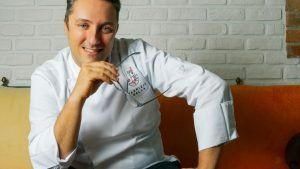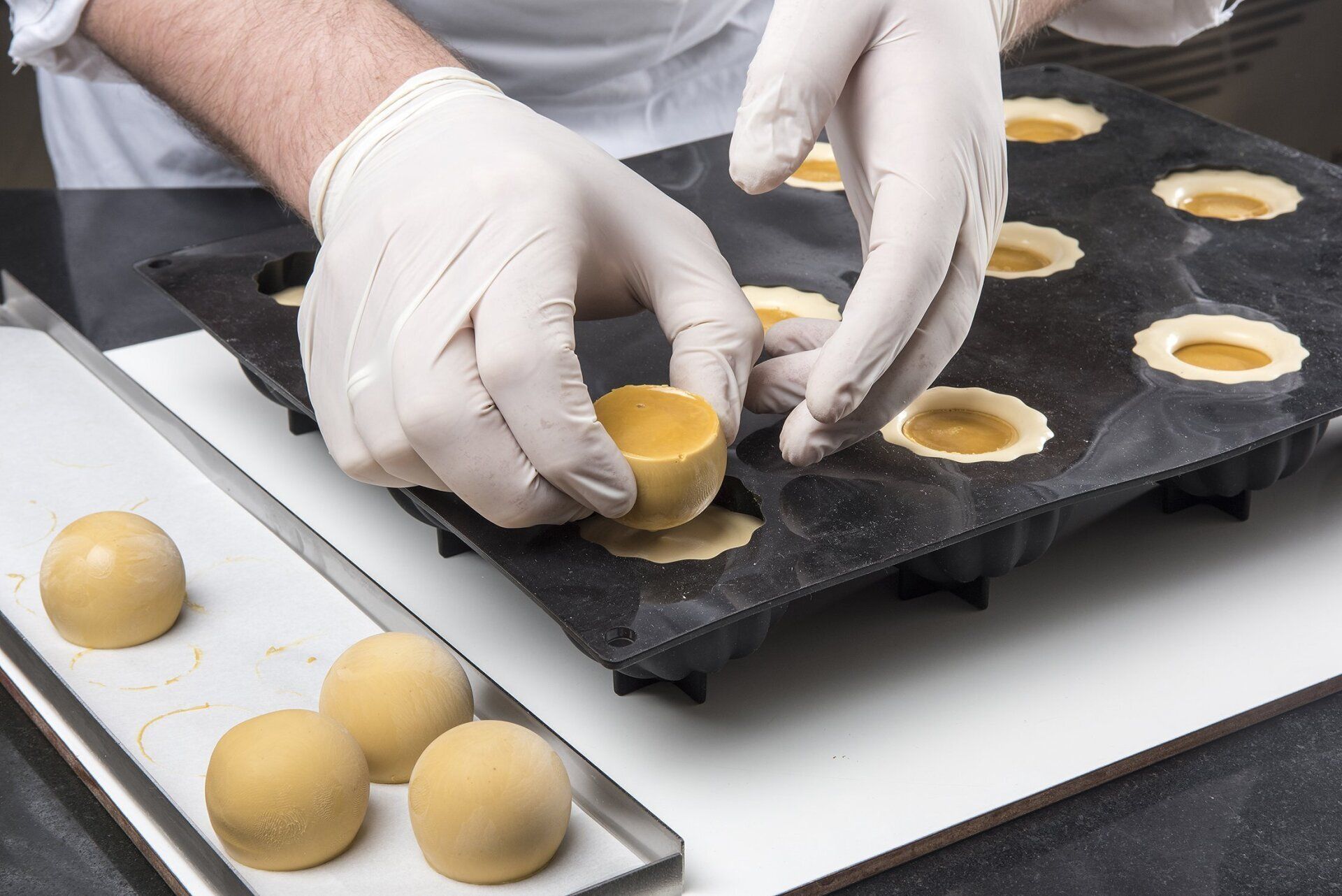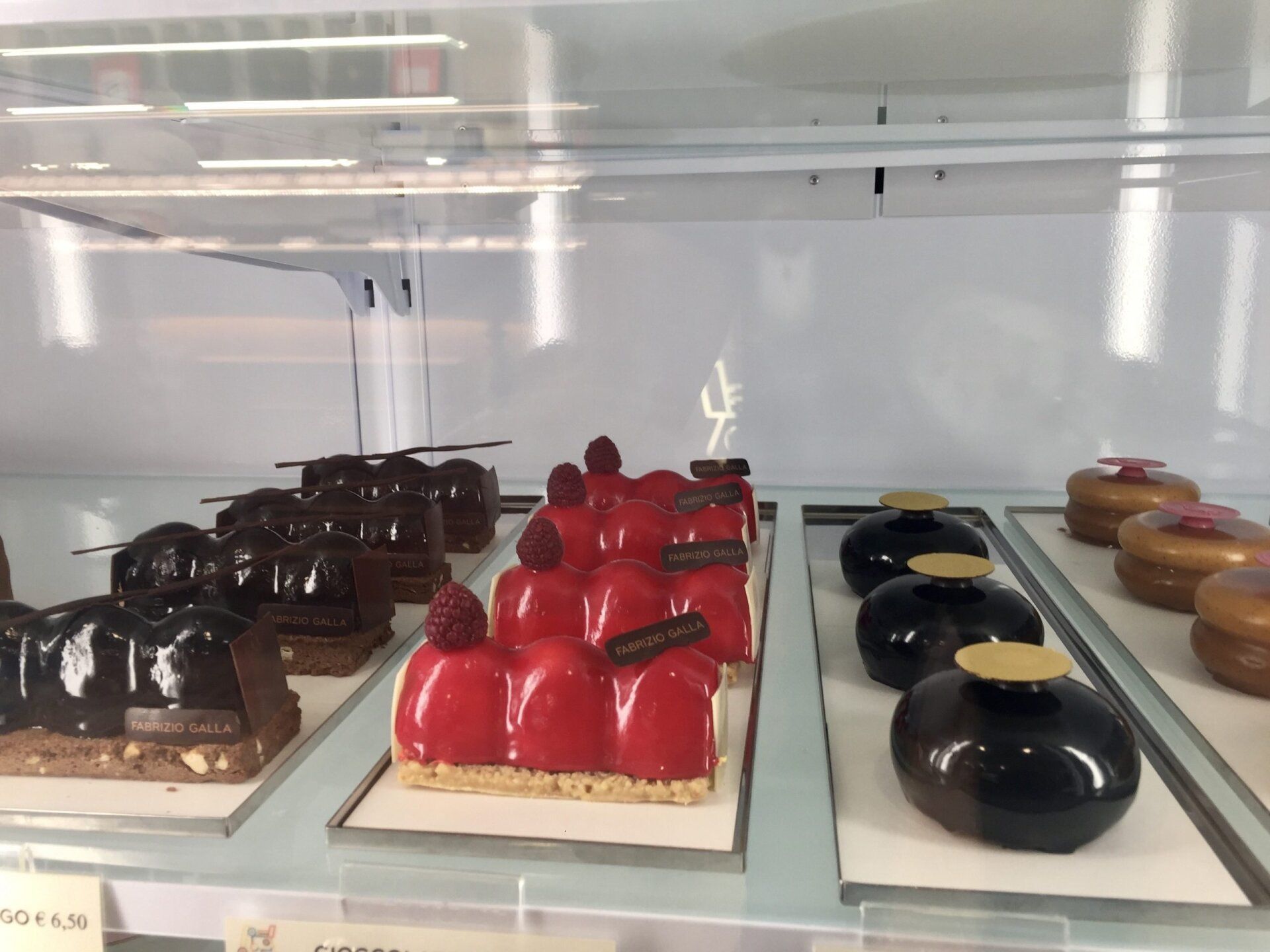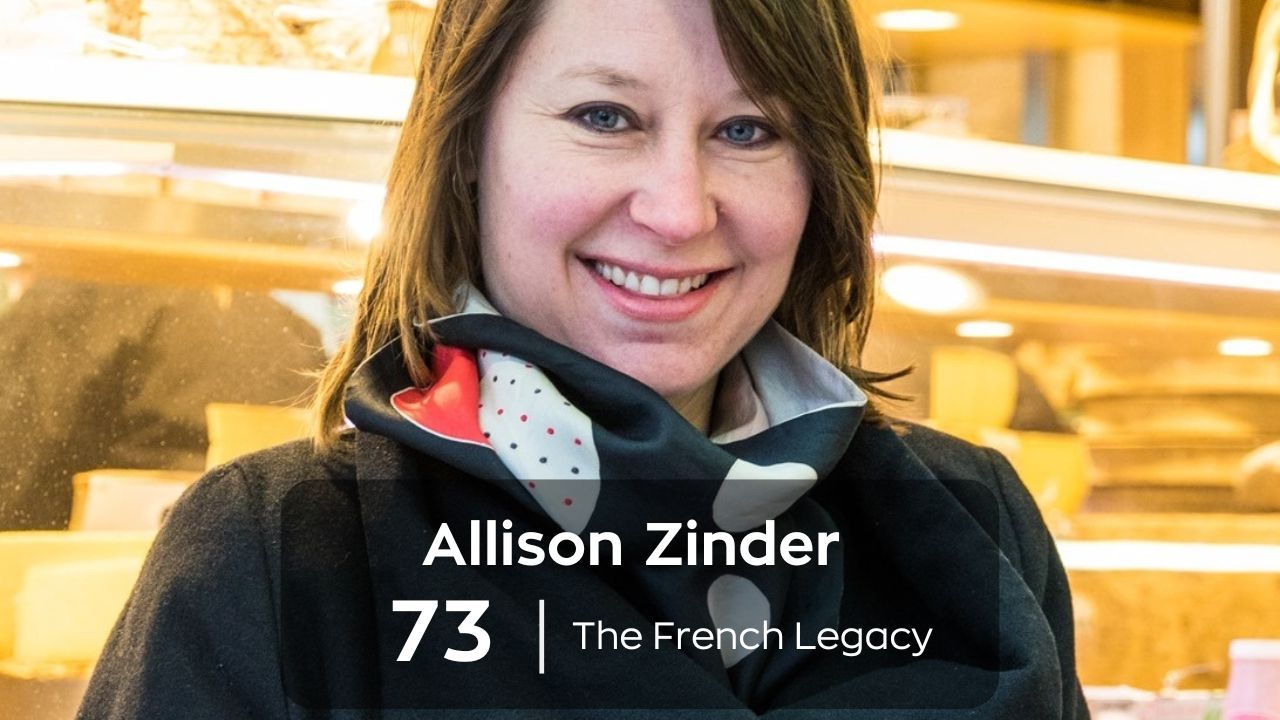Fabrizio Galla, Don’t Call Me a Fool, I am a Pastry Chef!

Fabrizio Galla’s is a tall, slim, Piedmontese pastry chef, measured with words and ego, yet boasting enough decorations to be, aged 46, a contemporary industry Hall of Famer. In 2007 his Torta Jessica won first place in Lyon as Best Chocolate Cake in the World. A few years later, in 2017, he climbed up the ranks of the almighty king of “cakes-like bread”, Panettone, with the best specimen in Italy. In 2018 he got a 3-cake accolade from Gambero – pastry’s equivalent of the 3 Michelin macarons – and lately, he was crowned “Pastry Chef of 2020” by the Italian Academy of Pastry Masters captained by HM Iginio Massari.
Regardless of his fame and an open world of opportunities – from Paris to Barcelona and San Francisco – Fabrizio always returned to San Benedetto Po, his family retreat in the immediate surroundings of Torino, Italy’s capital of pastry. Here, in 2014, Fabrizio opened a pastry shop – next door to his parents’ restaurant, established in 1875 – combined with a cafe and bakery.
This is an extract from a short interview I had with Fabrizio in the last days.
Livio: How did you approach the world of pastry?
Fabrizio: At the end of the 80’s when I was a teenager I attended “Scuola Arti Bianche” in Torino, at the time one of the only two pastry & baking schools in Italy, with pupils coming from all over the Italian peninsula. After finishing my studies I paid my dues at a restaurant in Courmayeur prior to joining Falchero, a historic patisserie in Torino, selling fresh pastry for the equivalent of today’s 90€ per kg. Pure, classic, Piemontese mignon pastry tradition, with minuscule cream puffs, slightly bigger than a hazelnut. I was making them manually one-by-one and it would take some 100 pieces to reach a kilogram.
L: You seem nostalgic about those days. Does the world you describe still exists?
F: The tradition of high patisserie and chocolate is present, not only in Piemonte, but I have witnessed a decline. Up until the 90’s an established Torinese pastry workshop would make everything for parties, festivities, and celebrations in a region that more than any other in Italy has seen the pomp of aristocracy and a rampant bourgeoisie: from petite patisserie, pralines, ginevrine, to savories, pizzette, and saltines, all the way down to confectionery and the large leavened cakes of the north, Panettoni, and Colombe.
L: In your career, you created something unique, praised all over the world. What was it and how did it happen?
F: At the beginning of my career, for over a decade I worked at some iconic atelier next to some masters in the craft of pastry. On my day-offs I would help in the family restaurant, taking over the dessert station and experimenting with our regulars, locals with a given sense of things and taste. Next to my father’s memorable “gran fritto Piemontese” people would begin hastening over from the whole region after my desserts. For years I worked on perfecting my own art-piece, Torta Jessica, a complex dessert-cake where every flavor and component is singularly distinguished: crunchy hazelnuts with pink Himalayan salt, spreadable Gianduja, chocolate sponge cake layers filled with caramel of mango, passion fruit, and Tahiti vanilla, tiramisù spread, Santo Domingo chocolate mousse, and cocoa glazing. After winning the 2007 Award in Lyon as World’s Best Chocolate Cake, I brought my creation to San Francisco where Jessica went top of the charts.
L: What is your idea of pastry and what’s your take on the challenges of the craft?
F: My final goal with pastry is to design and create pieces that are pleasing to the eye and easy to understand. With little time left to the pleasures of life, we need pastry to be good and beautiful, an expression of personality and identity. Pastry is innovation by definition, and in a traditionalist country like Italy, the connection with the origins and the use of local ingredients are essential for the quality and the identity of our craft. While I admire colleagues from Belgium, France, Spain, and Austria, I still love the fact that we can claim authorship on some world iconic sweets – think cassata, cannoli, pastiera, babà, tiramisù. What I dislike in Italy is that we are living on some unnecessary trending topic. Like panettone, for instance. While I have seen major discussions on the right recipe for carbonara or bolognese, everybody seems cool with the hundreds versions of panettone popping out every year. I understand Christmas is business but all in all we shouldn’t forget common sense. Saffron panettone? The world can easily do without.
L: What do you foresee for your industry and what’s your wish for the years to come?
F: To me, the current pandemic is like a social accelerator, for better or for worse. In the past months, there has been a forced natural selection in every field, especially in hospitality, and pastry is not exempt. As events come to a head, people closing down today are the ones that improvised and managed their business without a clue yesterday. I wake up every morning daydreaming of new normality, with less fear in the society, better understanding from our governors, and people walking in our shop with confidence and serenity. Don’t call me a fool, I am a pastry chef!
Authored by: Livio Colapinto, Zest of Italy


© World Food Travel Association | All rights reserved.
Terms & Conditions |
Privacy Policy
Pages not loading correctly? We do not recommend Safari. Our website works best with Edge, Opera, Chrome, Brave or Firefox.










